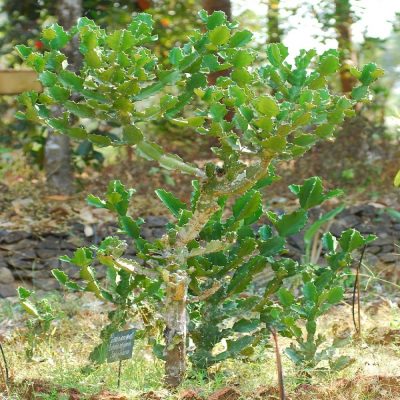Distribution and habitat: Found throughout the hotter parts of India.
Botany: A small armed tree with whorled fleshy branches, branchlets thick and broad, 3-5 winged, having sharp stipular spines
- Leaves: Small, 6-13 mm long, sub sessile, soon deciduous; involucres 3-nate,
- Inflorescence: The central flower sessile, female, the two laterals on long stout pedicels, glands 5, stamens numerous; styles bifid
- Fruits: Capsules.
Properties: Emetic, purgative, diuretic
Chemical constituents: Taraxerol and epi-friedelanol in the stem-bark, friedelan-3β-oland 3α-ol, Taraxerol and Taraxerone in the stems, β-Amyrin,Cycloartenol and Ingenol type Diterpenoids in the latex. euphol 3-O-cinnamate, antiquol A and antiquol B, euphol, 24-methylenecycloartanol, cycloeucalenol, (Z)-9-Nonacosene, sitosterol and p-acetoxyphenol are also present in latex
Uses: Otalgia, colic, constipation, wounds, ulcers, rheumatism, gout, neuropathy, deafness, cutaneous diseases. Latex is used in relieving toothache and earache. it is an aphrodisiac It is used in the preparation of surgical threads for use in the Kshara Sutra treatment for fistula wounds. It kills maggots in the wounds.
Propagation: cuttings

